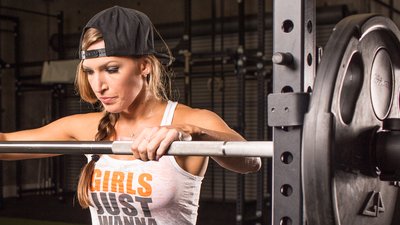You already know you're supposed to squat. You've heard it all: It's a fundamental human movement, it'll help you build the booty of your dreams, it's the foundation for solid lower-body strength. All of these reasons are true enough, but it's difficult to convince yourself to squat when it hurts to do one!
As a physical therapist, I see women all the time who complain that squats hurt their knees, hips, or lower back (and sometimes all three!). Although it seems like each type of pain would be caused by very different physical issues, the truth is that no matter where the pain is, most of us have the same problems.
Squat pain doesn't usually stem from training, but from sitting! Even with regular training, many of us sit most of the day. Sitting all day causes all kinds of physiological problems, and many of them are most apparent when we try to squat.
If something hurts when you squat, it's probably because you have tight hips or a tight back, and a weak core or weak glutes.
Weak Glutes
No matter what hurts when you squat, the pain can often be attributed to weak glutes. In general, women overuse their quadriceps and underuse their hamstrings and glutes (posterior chain). This quad dominance occurs because of the way we're built, a sedentary lifestyle, and a lack of education on proper lifting form. To perform a squat well, it's important for your hamstrings, glutes, and quads to work together.
The glutes, in particular, should be a major player in the squat. If they aren't strong enough to control the movement both eccentrically (on the way down) and concentrically (driving up), or help the core maintain an upright torso, other muscles have to do more work than they're supposed to.
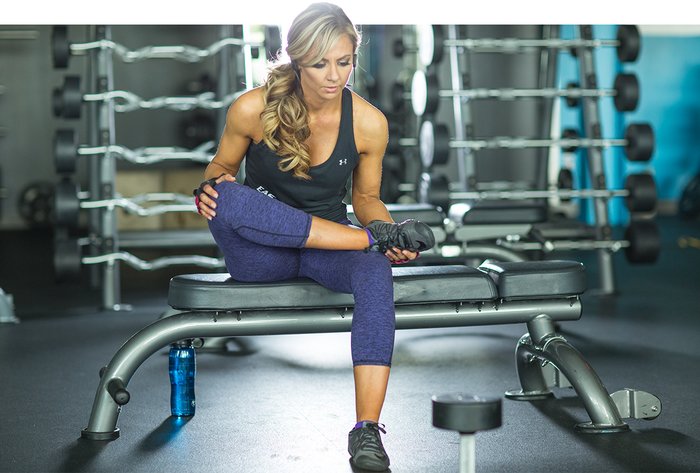
Stretching your hips and glutes will help you feel more mobile and less achy when you squat.
Weak glutes often cause a lifter to lean too far forward during the squat, making her lower back and hip flexors compensate. The low back isn't suited to take over for the glutes during the squat. If it does, it can cause a number of dysfunctions including the dreaded "butt wink" and a lot of lower-back pain. Leaning forward also causes the hip flexors to fire in order to maintain balance. If your hip flexors are constantly overused, it can potentially cause pain in the hips.
Because we women often use our quads instead of our hamstrings or glutes, we can also be more susceptible to knee injuries because our knees move too far forward and/or collapse inward during a squat. If your knees collapse inward or move too far in front of your toes, you can stress the patella and other knee tendons and ligaments, all of which will translate into knee pain.
Tight Hips And A Stiff Upper Back
Your hips and upper back (thoracic spine) are meant to be very mobile. Because many of us spend so much time in a sitting position, however, we tend to lose mobility in both these areas.
When you squat with limited mobility in either your hips or thoracic spine, you lean forward. Though its normal to have a slight lean forward as you descend into your squat, a lack of mobility can make this lean excessive. An excessive lean can cause your spine to lose its natural arch. This is especially noticeable in the lower part of your spine.
If your spine comes out of its natural position, you can bet on some aches.
Weak Core
Adding to the issues above, I think people underestimate how important the core is to a proper squat. When you squat, it's important to maintain an upright, neutral spine and keep it that way throughout the lift. If your core is weak, there's no way you'll be able to keep your torso upright.
If you can't keep your torso upright, you'll end up with that excessive forward lean and lose that natural arch in your spine. Both of those issues, as you already know, cause discomfort. You'll also have a really hard time lifting much weight.
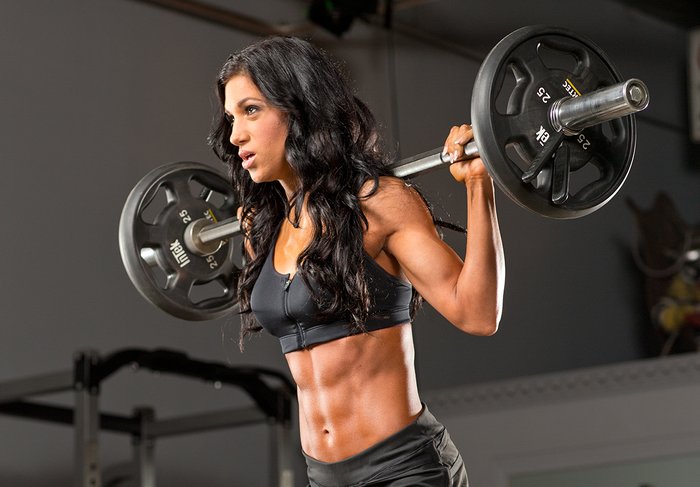
A strong core is essential to a strong squat!
Your Pain-Free Squat Plan
Now that you know what's probably causing your squat pain, I want to help you fix it! Here's a four-part plan that works every time.
Fix 1: Form Check
What's tough about squats is that everybody is shaped a little differently, which means there is no cookie-cutter way to perform a squat. However, if you're not sitting back as you squat, if your knees are caving in, or if your torso is completely collapsed forward, chances are your pain issues are at least partly the result of your form.
If you know you have some of these issues, start by watching a squat exercise video, read up on how to squat, and then concentrate on doing the movement correctly in the gym with a light load. Increase the weight only as much as allows you to maintain good form.
Fix 2: Strengthen Your Glutes
As you've probably gathered, your glutes need to be strong in order to perform a good, painless squat.
My favorite exercise to strengthen the glutes is a glute bridge. To perform a bridge, lie on your back with your knees bent and your spine neutral. Lift your hips in the air by squeezing your glutes. You can increase the resistance by leaning your upper body against a bench and adding a weighted plate or barbell to your hips. You can also do bridges with one leg.
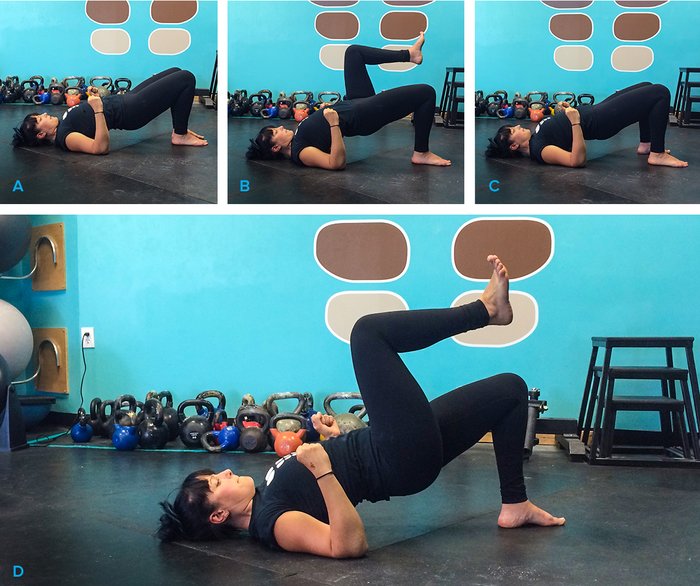
Single-Leg Glute Bridge
I also love the glute-bridge march. Position your body as you would for a normal glute bridge, then, with stable hips, lift one leg in the air slowly and hold a few seconds. Place your foot back on the ground and lift the other leg.
Don't let your hips move up and down or side to side throughout the movement. Do about 10 reps per side.
Fix 3: Strengthen Your Core
If your core is weak, your squat will be weak and probably painful. One of my favorite exercises to strengthen the core is called "stir the pot."
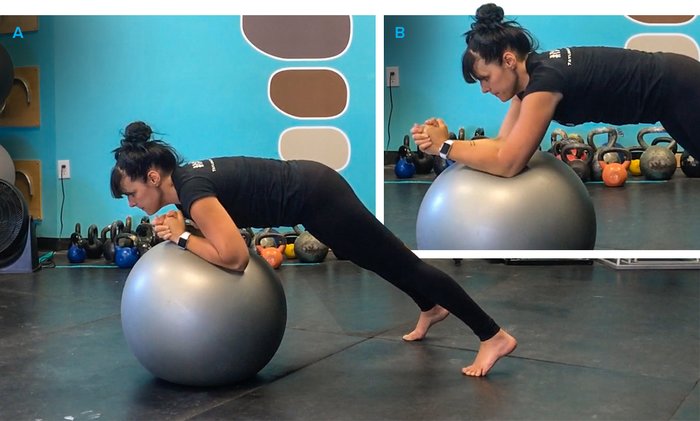
Stir The Pot
To perform this exercise, place your elbows and forearms on a stability ball so that you're in a plank position, with a slight bend in your knees. Move your elbows in a circular motion (stirring the pot) without letting your hips move. Stir in both directions.
Start with 30 seconds each direction, and work your way up to one minute.
Fix 4: Stretch Your Hip Flexors
We sit a lot. That means our hip flexors are generally short and tight. The following is a simple yet effective hip-flexor stretch that, when done properly, can really make a difference.
To perform the stretch, get into a half-kneeling position and hold a stick, dowel, or foam roller in front of you. Actively push the implement down into the floor. This small-but-important step ensures you are engaging your core and feeling the stretch in the hip flexors.
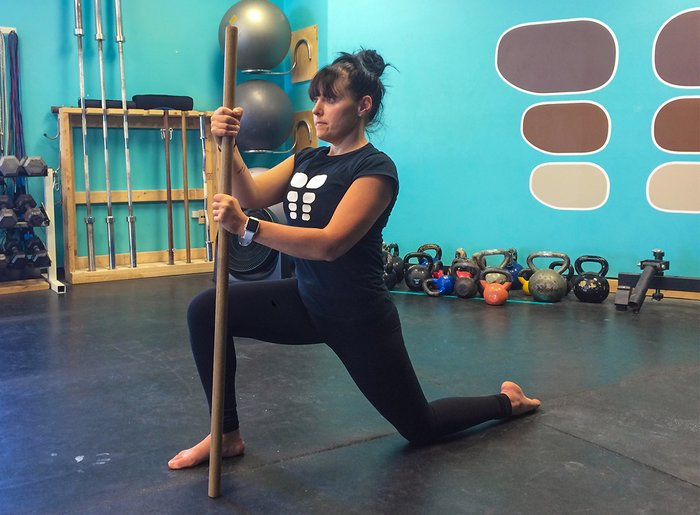
Hip-Flexor Stretch
Keep your body upright as you squeeze your glutes and tuck your butt down. Lean forward from your hips, holding the end position for no more than 2 seconds. Return to the start, and repeat the movement 8-10 times per leg.
Don't Cut The Squat
The saying "if it hurts, don't do it" is pretty sound advice. However, I think nearly everyone should include squats in their training. The key is to start with an appropriate weight, and perform the movement properly so you remain pain-free. If the squat does hurt, it's important to correct the movement dysfunctions mentioned above.
Don't be afraid of the squat! Just take your time, and don't hesitate to practice. You may not master the squat on your first try, but it's truly is one of the best full-body exercises you can do for any fitness goal.

